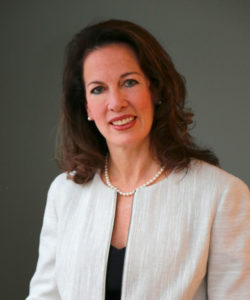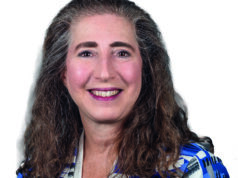
The World Federation of Vascular Societies (WFVS) has entered a new era of transformation, seeking to better pave the way for disparate vascular surgeons and societies to disseminate the latest science and best practices to every corner of the globe.
In what is planned to be a two-year transitional period, the WFVS will now be housed administratively under the aegis of the Society for Vascular Surgery (SVS) and led by new Secretary-General Palma Shaw, MD, the current chair of the SVS International Relations Committee.
The WFVS, currently led by Australia-based President Peter Subramaniam, MBBS, is an amalgam of membership societies from every continent, including the SVS in North America, the European Society of Vascular Surgery (ESVS) and the Asian Society for Vascular Surgery. Its core mantra involves connecting member societies in order to foster international scientific discourse, share knowledge of effective therapies and interventions, and impart developments in vascular specialist training strategies.
Previously, the federation would host an annual meeting in the home country of the reigning president, who would also assume its administrative home, with member society participants traveling from across the world to attend.
In the new era, Shaw and SVS staff will seek to establish a sustainable future for the WFVS through a fixed administrative abode as well as ongoing live meeting events housed on a digital platform. The plans are the result of a memorandum of understanding recently agreed between the WFVS, the SVS and the ESVS.
“The WFVS mantra will remain the same but this is, in fact, an evolution,” explains Shaw, a professor of surgery at the State University of New York, a member of the division of vascular surgery at Upstate Medical Center in Syracuse, New York, and also the program director of the vascular fellowship at the same institution, in an interview with Vascular Specialist.
Shaw was tapped for the role of secretary-general by outgoing SVS President Ronald L. Dalman, MD, and Executive Director Kenneth M. Slaw, PhD, owing to her experience on the International Relations Committee. She is believed to be the first female leader within the organization, and will be joined by Wei Zhou, MD, a professor of surgery and the chief of the division of vascular surgery at the University of Arizona College of Medicine-Tucson, Arizona, who will be the second SVS representative to the WFVS council of officers.
The post-pandemic era of virtual meetings helped inform the need for a digital-based future for WFVS meetings, said Shaw. “We’re proposing that there is a migration from an annual WFVS live event to an ongoing digital platform,” she continues. “The support provided will be such that we will help transition the WFVS to a sustainable, virtual, digital platform, and it won’t be anticipated that members are obligated to attend live events or meetings, although we can hold live meetings if we choose to.
“Additionally, there has been this rotating administrative home housed wherever the president is, and it would change every year. It really wasn’t providing a lot of stability for this society. So, the governance and administrative home needed to be set and established. Also, they didn’t have resources, because they don’t really charge dues, with the $1,000-a-year fee for each society not really amounting to much except to support the website. We also thought the mission could be broadened.”
Governance of the WFVS will be retained by the Federation Council through its soon-to-be-revised bylaws and constitution. The transformation will include a new website and the recruitment of a part- or full-time international relations manager. Shaw will remain in post for the duration of the two-year transition, working alongside Slaw with the ultimate goal of long-term sustainability and completing the Federation’s digital re-birth.
“It’s an aggressive lift but I think it’s very exciting and very doable,” comments Shaw, who feels particularly prepared for the secretary-general role having taken up the reins mere days after graduating with an executive MBA. “I’ve had many conversations with the existing leadership, the president, the outgoing secretary-general, all of the council members.”
A presidential changing-of-the-guard is due in October, and a secretary-general-elect is also in place in the form of Juan Paolini, MD, the current treasurer of the Latin American Association of Vascular Surgery. The new set-up will be reassessed in two years, with a pulse-check coming at the 2022 Vascular Annual Meeting (VAM), where a WFVS session is planned.
“The reality is, I don’t think that, even in this era, even when COVID goes away, we can go back to live meetings for the WFVS every year,” reflects Shaw. “Think about the limitations of requiring people to travel all over the world—from Australia to go to Boston, or from India to go to Australia or South America. The last in-person WFVS meeting, which I went to in 2018, was wonderful, but people had to travel from places like Australia to South America. The distances can be great.
“What we can actually do—and I really think this is the way things are going—is we use a virtual platform to hold things together, to educate and communicate to keep moving things forward, and then we have periodic in-person meetings.”
The fundaments of spreading up-to-date developments in vascular science to those pockets of the globe that might not otherwise have access to the latest best practice remain at the core of WFVS, adds Shaw. “Out of this terrible pandemic, we’re going to capitalize on a lot of good things that we’ve learned to optimize our strategy, to work together in a societal way, to disseminate information to those people that have not,” she says. “There are people, for example in Africa, in the Philippines, and in other parts of the world, who don’t have the means to have the latest information. Some don’t have a society to represent them. There are people practicing vascular surgery who can’t leave where they are because they might be the only vascular specialist in the whole region. They can’t go to a vascular meeting or attend the SVS meeting to learn the latest.
“This is a collaborative effort to organize the vascular societies with resources, to reach those still developing: All of the societies, which are designed mostly by continent, and their leaders collaborate and exchange ideas so that everybody benefits—so no one continent is held back. We bring everybody together on the virtual platform, increasing our communication dramatically by doing so.”












